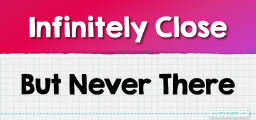How to Master the Squeeze Theorem for Calculating Limits
The Squeeze Theorem, also known as the Sandwich Theorem or the Pinching Theorem, is a fundamental result in calculus that allows one to determine the limit of a function by "squeezing" it between two other functions whose limits are known and equal at a certain point. This theorem is particularly useful when directly evaluating the limit of a function is difficult due to the function's complexity or indeterminate nature. Let's explore this concept through a methodical guide.

Step-by-step Guide to Master the Squeeze Theorem for Calculating Limits
Here is a step-by-step guide to mastering the squeeze theorem for calculating limits:
Step 1: Grasping the Conceptual Framework of the Squeeze Theorem
To understand the Squeeze Theorem, visualize three functions \(f(x)\), \(g(x)\), and \(h(x)\) such that for all \(x\) in an interval around \(c\) (excluding c itself if necessary), the inequality \(f(x) ≤ g(x) ≤ h(x)\) holds. If both \(f(x)\) and \(h(x)\) have the same limit as \(x\) approaches \(c\), then \(g(x)\) must also have that limit.
Step 2: Identify the Functions to Be Squeezed
Determine the function whose limit you need to find (\(g(x)\)) and identify two other functions (\(f(x)\) and \(h(x)\)) that can serve as the lower and upper bounds, respectively. These bounding functions should be chosen such that their limits are easier to calculate than that of \(g(x)\).
Step 3: Verify the Inequalities
Confirm that the inequalities \(f(x) ≤ g(x) ≤ h(x)\) are valid for all \(x\) in an open interval around the point \(c\), except possibly at \(c\) itself. This step may require algebraic manipulation or graphical analysis to ensure that \(g(x)\) is indeed “squeezed” between \(f(x)\) and \(h(x)\).
Step 4: Calculate the Limits of the Bounding Functions
Calculate \(lim_{x→c}f(x)\) and \(lim_{x→c}h(x)\). These limits must exist and be equal. If these bounding functions do not converge to the same limit, the Squeeze Theorem cannot be applied.
Step 5: Apply the Squeeze Theorem
Invoke the Squeeze Theorem by asserting that since \(f(x) ≤ g(x) ≤ h(x)\), and the limits of \(f(x)\) and \(h(x)\) as \(x\) approaches \(c\) are equal, then by the theorem, \(lim_{x→c}g(x)\) must also exist and be equal to this common limit.
Step 6: Address the Limit Point
If the point \(c\) is not part of the domain of \(g(x)\) (which is often the case), ensure that the behavior of \(g(x)\) as \(x\) approaches \(c\) is considered. The theorem holds regardless of the value or the absence of \(g(c)\).
Step 7: Solidify Understanding Through Examples
To solidify the understanding of the Squeeze Theorem, it can be helpful to apply it to specific examples, such as trigonometric functions within limits, where direct computation might be complicated.
Step 8: Examine the Proof of the Squeeze Theorem (Optional)
For those interested in the theoretical underpinnings, examining a proof of the Squeeze Theorem can provide deeper insight into its validity and application. This involves understanding the formal definition of a limit and how the inequality constraints lead to the result.
Step 9: Utilize Graphical Aids
Graph the functions \(f(x)\), \(g(x)\), and \(h(x)\) to visually confirm the squeezing effect. This can also help in finding appropriate functions to act as bounds for \(g(x)\).
Final Word
The Squeeze Theorem is a powerful tool in calculus for determining limits that are not readily apparent. By systematically following these steps, one can adeptly apply the theorem to a variety of functions, enhancing their analytical capabilities in calculus. It exemplifies how boundaries can shape and define the behavior of a function as it approaches a point, thus allowing one to determine its limit by analysis of its constraints.
Related to This Article
More math articles
- How to Find Continuity at a Point?
- Treasure Hunt in Geometry: How to Navigate Through Polygons’ Scale Drawings
- Full-Length GRE Math Practice Test
- How to Add and Subtract in Scientific Notations? (+FREE Worksheet!)
- Best Coronavirus Resources for Students
- FREE 7th Grade SBAC Math Practice Test
- Top 10 CLEP College Algebra Practice Questions
- How to Multiply Monomials? (+FREE Worksheet!)
- Top 10 Tips to Create an AFOQT Math Study Plan
- Top 10 3rd Grade IAR Math Practice Questions


























What people say about "How to Master the Squeeze Theorem for Calculating Limits - Effortless Math: We Help Students Learn to LOVE Mathematics"?
No one replied yet.